
Burkhard Schlothauer presents two works by John Cage written for septet, using indeterminacy in a score where each instrumental part is given twenty time brackets, allowing overlapping sounds which will be shaped depending on choices from each performer.
Save $0.65
Out of Stock
Quantity in Basket: None
Log In to use our Wish List
Shipping Weight: 3.00 units
Sample The Album:
John Cage-composer
Burkhard Schlothauer-composer
Ulrich Krieger-clarinet
Normisa Pereira da Silva-alto flute
Burkhard Schlothauer-violin
Julia Eckhardt-viola
Marcus Kaiser-cello
Guy Vandromme-piano
Tobias Liebezeit-percussion
Click an artist name above to see in-stock items for that artist.
UPC: 4011778041504
Label: Edition Wandelweiser Records
Catalog ID: EWR 0604
Squidco Product Code: 21816
Format: CD
Condition: New
Released: 2006
Country: Germany
Packaging: Cardstock 3 page foldover
Recorded at On Air Studio in Berlin-Kreuzberg, Germany in 2002.
"Let's assume, that art music as a field of creative cognitive activity is interrelated with the scientific paradigm and that its structure, therefore, at least partially reflects the contemporary way of looking at the world. The essential paradigmatic elements of the early 21st century would then entail all kinds of demands on music.
Having lost certainties, for example, the issue of probabilities should be broached.
Fields of possibilities should be designed. Non-hierarchically structured complex systemscould be simulated and experienced by open sets of rules and by autonomous individuals playing with conditional and unconditional decisions.
The confined cosmos of the self-reflecting subject, 19th century epiphenomenon of the program of Enlightenment, were to give way to a joint encounter with the senselessness and purposelessness of contingency.
Different as they are, both works on this CD could be thought of as test arrangements in the sense of the preceding programmatic assumptions. Both works obtain their micro- and macrostructure by screening acoustic fields of possibilities in consistently equal time brackets.
In Seven each instrumental part has twenty time brackets: nineteen of them lasting 75 seconds each (with 15 seconds overlap between subsequent time brackets); one of them lasting 45 seconds (without overlap).
Within these time frames (more precisely defined by time brackets for the beginning and the ending of a sound) the sounds (more or less exactly defined with respect to tone quality) must be played in the given order. This temporal organisation defines the probabilty of sounds coinciding. Each concrete realization in performance, however, will be shaped differently.
The instruments are composed in groups, based on clearly specified sound characteristics.
The piano has to play comparatively many, often dense sound aggregates, left and right hand being composed separately.
The winds play long, repeating single tones.
The strings have scratchy col legno sounds, maximally exploiting their pitch range. Rubbing and scratching sounds to be selected by the performer characterize the percussion part. Its sounds are, consequently, notdefined with respect to pitch. As far as clear pitches emerge, they are a supplement to the composed set of pitches.
The pitches of the other instruments, as well as the order of the tones, have been obtained by chance operations and are exactly defined in the score.
A further indeterminacy as to pitch results from the instruction "legno" for all strings. It remains open, whether only the wood of the bow should be used to produce the sounds or if the wood may be combined with the bow hair. Playing with no hair at all brings about a very brittle and unstable tone, especially in the higher regions, that sometimes takes on a highly unpredictable character, much like the rubbing percussion sounds.
In this recording the decision about how to play the col legno was left to the players.
Each player individually decides, when to play within a given time bracket. No interaction between the players is intended.
15 similar events defines sound as a concatenation of subsequent and sometimesoverlapping sound events. In 15 time brackets of 2´24´´ each the string trio, the flute and the piano each play a sound selected from a given list (there is a list for each instrument).
Each such list has 5 sounds, one of which should be used 5 times, one 4 times, one 3 times, one 2 times and 1 only one time during the course of the piece.
Within the first minute of a time bracket one player starts his sound. The other players then gradually blend their sounds into the unfolding sound event. This process should be continuous and not be interrupted by a pause between the single sounds.
If nobody starts playing within the first minute of a time bracket, no player is allowed to play during that section, except for the clarinet.
Each player stops playing, when his sound (no circular breathing, no bow change) ends.
Before the beginning of the next event in the ensuing time bracket there should be a pause.
The sound world of the harmony instruments is homogeneous and of an airy sonority, the piano, harmonically integrated with its historical sound, appears as something foreign, like in seven.
The instruments are interdependent, they interact only very distantly.
The clarinet plays its microtonal periodical melodies every four minutes.
The percussion with its decelerated elementary rhythms follows a separate time plan, that relates in varying ways to the time brackets of the other players.
Harmony, rhythm and melody: three event layers, that have nothing in common but their occurring at the same time at the same place and their arriving at our ears as a conjoint sound wave.
Maybe it is music's potential to mean nothing that makes it so special?
Maybe the encounter with such an art form may reconcile us with the contingency of life and death in our world?
Maybe contingency and, consequently, meaninglessness is the dimension of the world, which we have to come to terms with?
Burkhard Schlothauer (Translation: Antoine Beuger)
Artist Biographies
• Show Bio for John Cage "John Milton Cage Jr. (September 5, 1912 - August 12, 1992) was an American composer, music theorist, writer, philosopher, and artist. A pioneer of indeterminacy in music, electroacoustic music, and non-standard use of musical instruments, Cage was one of the leading figures of the post-war avant-garde. Critics have lauded him as one of the most influential American composers of the 20th century. He was also instrumental in the development of modern dance, mostly through his association with choreographer Merce Cunningham, who was also Cage's romantic partner for most of their lives. Cage is perhaps best known for his 1952 composition 4′33″, which is performed in the absence of deliberate sound; musicians who present the work do nothing aside from being present for the duration specified by the title. The content of the composition is not "four minutes and 33 seconds of silence," as is often assumed, but rather the sounds of the environment heard by the audience during performance. The work's challenge to assumed definitions about musicianship and musical experience made it a popular and controversial topic both in musicology and the broader aesthetics of art and performance. Cage was also a pioneer of the prepared piano (a piano with its sound altered by objects placed between or on its strings or hammers), for which he wrote numerous dance-related works and a few concert pieces. The best known of these is Sonatas and Interludes (1946-48). His teachers included Henry Cowell (1933) and Arnold Schoenberg (1933-35), both known for their radical innovations in music, but Cage's major influences lay in various East and South Asian cultures. Through his studies of Indian philosophy and Zen Buddhism in the late 1940s, Cage came to the idea of aleatoric or chance-controlled music, which he started composing in 1951. The I Ching, an ancient Chinese classic text on changing events, became Cage's standard composition tool for the rest of his life. In a 1957 lecture, Experimental Music, he described music as "a purposeless play" which is "an affirmation of life - not an attempt to bring order out of chaos nor to suggest improvements in creation, but simply a way of waking up to the very life we're living"." ^ Hide Bio for John Cage • Show Bio for Burkhard Schlothauer "Born in 1957 Burkhard Schlothauer is German composer, multi-instrumentalist, educator and producer who lives in Gera in Eastern Germany. With Antoine Beuger he was the founder of Editions Wandelweiser in 1992. He performs with Zeitkratzer and the Wandwelweiser Composers Ensemble." ^ Hide Bio for Burkhard Schlothauer • Show Bio for Ulrich Krieger "Ulrich Krieger is well known as a saxophone player in contemporary composed and free improvised music as well as a composer of chamber music and electronic music. His recent focus lies in the experimental fields and fringes of contemporary Pop culture: somewhere in the limbo between Noise and Heavy Metal, Ambient and Silence. His original compositions go back and forth between Just Intonation, Silent Music, Noise, Instrumental Electronic, often asking for elaborate amplification, and works in the limbo of Rock culture - not accepting stylistic boundaries. Krieger developed his own, often amplified style of saxophone playing, he calls 'acoustic electronics'. He uses refined acoustic, quasi-electronic sounds, which then get processed, the saxophone often becoming more an 'analogue sampler' rather than a traditional finger-virtuoso instrument. By amplifying his instrument in various ways, he gets down to the 'grains of the sounds', changing their identity and structure from within. Ulrich Krieger was commissioned to write works for: Soldier String Quartet, oh-ton ensemble, Ensemble United Berlin, KontraTrio, zeitkratzer, Ensemble Experimente, Seth Josel, intersax, Text of Light, and others. His compositions are widely performed by ensembles in Europe and the USA. He has managed to transcribe and arrange Lou Reeds infamous 'Metal Machine Music', everybody thought impossible to do, for classical instruments, performed by zeitkratzer and other groups. He also arranged works by Merzbow, Throbbing Gristle, Deicide, Terry Riley, Henry Cowell and others for chamber ensemble. He collaborates with: Lou Reed, LaMonte Young, Phill Niblock, Text of Light, Lee Ranaldo, Phill Niblock, John Duncan, Zbigniew Karkowski, Merzbow, Thomas Köner, DJ Olive, Christian Marclay, Kasper T Toeplitz, Antoine Beuger, Radu Malfatti, Mario Bertoncini, Michiko Hirayama, Miriam Marbe, Hans-Joachim Hespos, Ensemble Modern, Berliner Philharmoniker, Soldier String Quartet, zeitkratzer, just to name a few. Krieger has received prizes, grants and residencies from: Kunststiftung Baden-Württemberg, Villa Aurora Los Angeles, Deutsches Studienzentrum Venedig e.V., Akademie der Künste Berlin, 'Meet-the-Composer' Forum New York, DAAD, Darmstädter Ferienkurse für Neue Musik, and many others. He lived in Berlin and New York, and was 'Composer-in-Residence' in Los Angeles, Rom, Venice, Bologna, and Townsville (Australia). He studied saxophone, composition and electronic music at the UdK Berlin (University of the Arts) and the Manhattan School of Music New York and performed with orchestras like: Berliner Philharmoniker, Deutsches Symphonie Orchester, Rundfunk-Symphonie-Orchester Berlin, Ensemble Modern, Musikfabrik, and many more. Since 2007 he lives in Southern California, where he is associate professor for the composition faculty at the California Institute of the Arts in Los Angeles." ^ Hide Bio for Ulrich Krieger • Show Bio for Burkhard Schlothauer "Born in 1957 Burkhard Schlothauer is German composer, multi-instrumentalist, educator and producer who lives in Gera in Eastern Germany. With Antoine Beuger he was the founder of Editions Wandelweiser in 1992. He performs with Zeitkratzer and the Wandwelweiser Composers Ensemble." ^ Hide Bio for Burkhard Schlothauer • Show Bio for Marcus Kaiser "Marcus Kaiser was born 1967. He studied cello at the Robert Schumann-Musikhochschule in Düsseldorf and visual arts at the Kunstakademie Düsseldorf by Klaus Rinke. In 1997 he started Kaiserwellen, a space for interdisciplinary artistic presentations. He creates large-scale performative installations which include architecture, objects, video-projections and performing musicians, in which music and film are equivalent disciplines. 2001 he was awarded the Upcoming Artists Prize of the City of Düsseldorf." ^ Hide Bio for Marcus Kaiser • Show Bio for Guy Vandromme "Pianist/conductor Guy Vandromme is a performer within the fields of opera and music theatre, dance, working as a soloist, accompanist, conductor and artistic director. He has been a major driver behind the program of the European Cultural Capital of Brugge 2002. More recently he became responsible for the festival Klankenstroom bringing cultural heritage, classical music and tourism together. His main focus is to open the boundaries of music theatre, collaborating with contemporary artists, and exploring scores of forgotten music. This year his first solo recording of music of John Cage will be edited by Wandelweiser records." ^ Hide Bio for Guy Vandromme • Show Bio for Tobias Liebezeit "Tobias Liebezeit is a classical percussionist, a member of Philharmonic Orchestra Of Europe, The Barton Workshop, and Wandelweiser Komponisten Ensemble." ^ Hide Bio for Tobias Liebezeit
11/20/2024
Have a better biography or biography source? Please Contact Us so that we can update this biography.
11/20/2024
Have a better biography or biography source? Please Contact Us so that we can update this biography.
11/20/2024
Have a better biography or biography source? Please Contact Us so that we can update this biography.
11/20/2024
Have a better biography or biography source? Please Contact Us so that we can update this biography.
11/20/2024
Have a better biography or biography source? Please Contact Us so that we can update this biography.
11/20/2024
Have a better biography or biography source? Please Contact Us so that we can update this biography.
11/20/2024
Have a better biography or biography source? Please Contact Us so that we can update this biography.
Track Listing:
1. Seven (1998) 20:05
2. 15 Similar Events - Septet (2002) 36:37
Compositional Forms
Avant-Garde
John Cage
Septet recordings
New in Compositional Music
Search for other titles on the label:
Edition Wandelweiser Records.


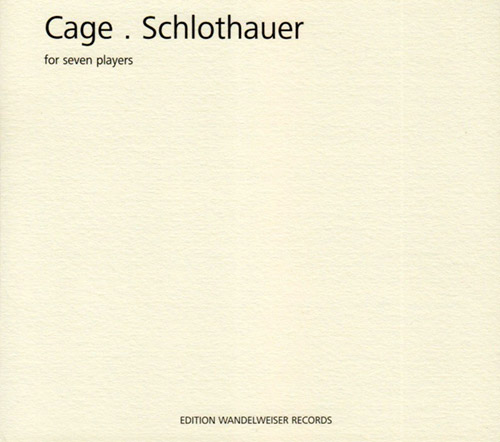


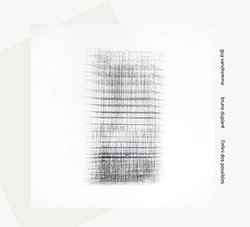



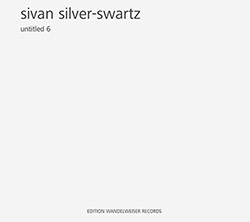

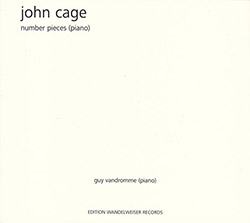
















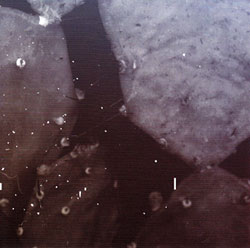


![Guy, Barry / Ken Vandermark: Occasional Poems [2 CDs]](https://www.teuthida.com/productImages/misc4/34849.jpg)
![Novoa / Carter / Mela Trio: Vol.1 [VINYL]](https://www.teuthida.com/productImages/misc4/35236.jpg)


![Elephant9 : Mythical River [VINYL]](https://www.teuthida.com/productImages/misc4/34624.jpg)
![Evans, Peter (Evans / Eldh / Black): Extra [VINYL]](https://www.teuthida.com/productImages/misc4/35279.jpg)

![McPhee, Joe: Straight Up, Without Wings [BOOK]](https://www.teuthida.com/productImages/misc4/35454.jpg)
![Jeck, Philip: rpm [2 CDs]](https://www.teuthida.com/productImages/misc4/35455.jpg)













![Barker / Parker / Irabagon: Bakunawa [VINYL]](https://www.teuthida.com/productImages/misc4/35533.jpg)
![Blaser, Samuel / Marc Ducret / Peter Bruun: Dark Was The Night, Cold Was The Ground [VINYL 10-inch]](https://www.teuthida.com/productImages/misc4/35492.jpg)








![Warren, Kenny (Warren / Hoffman / Ellman): Sweet World [VINYL]](https://www.teuthida.com/productImages/misc4/35451.jpg)




![Blake, Ran / Dave Knife Fabris: Live Amsterdam 2006, First Visit [CD + POSTCARDS]](https://www.teuthida.com/productImages/misc4/35275.jpg)













![DNS: Taking Big Bites Of The Khandas Three Cafes Deep [2 CDs]](https://www.teuthida.com/productImages/misc4/35334.jpg)




![Cleaver, Gerald: The Process [VINYL]](https://www.teuthida.com/productImages/misc4/34966.jpg)




![Alva Noto: HYbr:ID II [VINYL 2 LPs]](https://www.teuthida.com/productImages/misc4/35201.jpg)

![Baron, Derek / Luke Martin: Distinct and Concealed [CASSETTE + DOWNLOAD]](https://www.teuthida.com/productImages/misc4/35079.jpg)

![Lyle, Erica Dawn : Colonial Motels [CASSETTE + DOWNLOAD]](https://www.teuthida.com/productImages/misc4/35080.jpg)









![Sanna, Claudio: Compositori Sardi Contemporanei II [2 CDs]](https://www.teuthida.com/productImages/misc4/35317.jpg)







![Zurria, Manuel: Fame di Vento [3 CDs]](https://www.teuthida.com/productImages/misc4/35167.jpg)

![Granberg, Magnus / Nattens Inbrott / Skogen: Holde Traume, Kehret Wieder! [2 CDs]](https://www.teuthida.com/productImages/misc4/35038.jpg)
![Frey, Jurg: Outermost Melodie [2 CDs]](https://www.teuthida.com/productImages/misc4/35039.jpg)

![Pavone, Jessica: Reverse Bloom [VINYL]](https://www.teuthida.com/productImages/misc4/34895.jpg)




![Modney (Modney / Wooley / Gentile / Roberts / Pluta / Symthe / ...): Ascending Primes [2 CDs]](https://www.teuthida.com/productImages/misc4/34852.jpg)









![Elephant9 with Terje Rypdal: Catching Fire [VINYL 2 LPs]](https://www.teuthida.com/productImages/misc4/35355.jpg)
![Deerlady (Obomsawin, Mali / Magdalena Abrego): Greatest Hits [VINYL]](https://www.teuthida.com/productImages/misc4/34876.jpg)




![Haino, Keiji: Black Blues [2 CDs]](https://www.teuthida.com/productImages/misc4/35109.jpg)



![Surplus 1980: Illusion of Consistency [CD]](https://www.teuthida.com/productImages/misc4/35069.jpg)
![Staiano, Moe: Away Towards the Light [VINYL + DOWNLOAD]](https://www.teuthida.com/productImages/misc4/35037.jpg)



![Caveira (Gomes / Sousa / Abras / Ferrandini): Ficar Vivo [VINYL]](https://www.teuthida.com/productImages/misc4/34643.jpg)
![Gregg, J. J. / David Van Auken: Lunar Prairie [CD w/ DOWNLOAD]](https://www.teuthida.com/productImages/misc4/34611.jpg)

![Coultrain: Mundus [VINYL]](https://www.teuthida.com/productImages/misc4/32439.jpg)
![Mattin: Songbook #6 [VINYL]](https://www.teuthida.com/productImages/misc4/27317.jpg)
![Punkappella: Wake Up [7-inch VINYL]](https://www.teuthida.com/productImages/misc4/17519.jpg)
![Residents, The: WARNING: UNiNC.: Live And Experimental Recordings 1971-1972 [VINYL 2 LPs]](https://www.teuthida.com/productImages/misc4/31521.jpg)
![Coultrain: Phantasmagoria [VINYL]](https://www.teuthida.com/productImages/misc4/30142.jpg)
![Lennon, Sean Ono: Asterisms [VINYL]](https://www.teuthida.com/productImages/misc4/34517.jpg)

![Coley, Byron: Dating Tips for Touring Bands [VINYL]](https://www.teuthida.com/productImages/misc4/17906.jpg)

![Lost Kisses: My Life is Sad & Funny [DVD]](https://www.teuthida.com/productImages/misc4/lostKissesDVD.jpg)